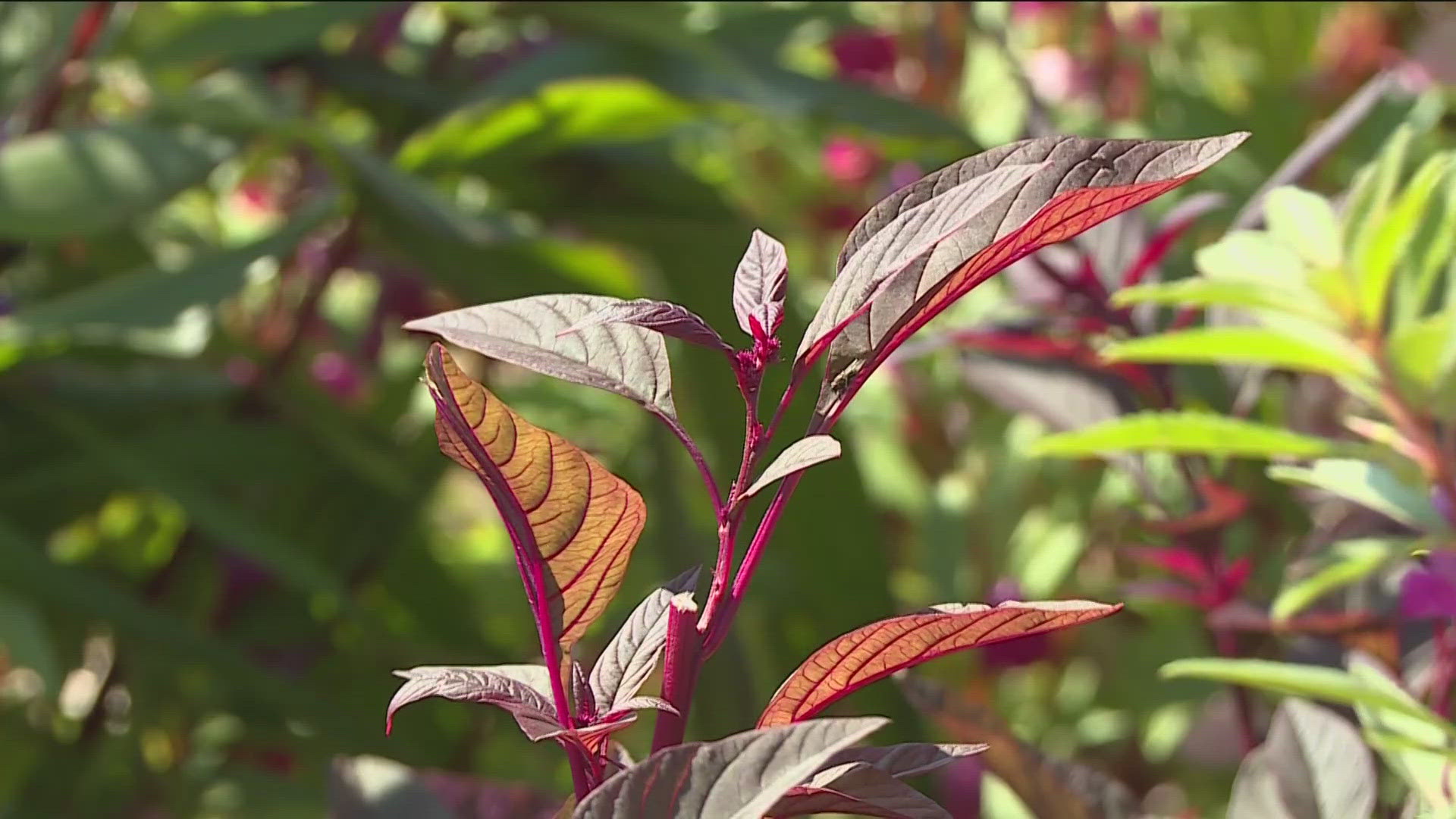As a home gardener I love growing at least one new plant each year. There are so many veggies and fruits and flowers and plants that a little experimentation can easily lead to some new favorites.
We’re here at the new Hmong Garden Gallery at the Arboretum. There are so many special plants in the garden, put together by local Hmong resident Zongxee Lee with seeds and plants her family brought here more than 40 years ago when they came to the U.S. from Vietnam.
Zongxee shared with us her suggestions for five plants we should try.
• Malabar spinach (Bassela alba ‘Rubra’): Also called red vein vine and green vein vine, these climbing plants produce tasty leaves that taste like true spinach (Spinacia oleraceae) and are used in Hmong cooking and in salads and stir-fries. Best of all, it loves heat and humidity. It grows up to 7 feet tall or along the ground.
• Bitter melon (Momordica charantia): This vining, mounding plant produces frilly leaves, pretty yellow flowers and dramatic, highly textured green fruits, which are an acquired taste, but a definite conversation starter.
• Amaranth: Rich burgundy leaves and dramatic flowers make this edible (with edible leaves and seeds/grain) a garden showstopper. It won’t live through the winter, but it will sow itself freely year after year.
• Lemongrass (Cymbopogon citratus), known in Hmong culture as black patches of grass, this culinary herb is a fantastic, fast-growing annual ornamental grass that looks beautiful in swaths and adds a lovely lemon flavor to savory dishes. It can reach 5 feet tall and likes good drainage.
• Balsam flower (Impatiens balsamina): A cottage garden classic of the past, this sturdy annual puts on a show with 3-foot tall blooms and stems that don’t flop!
Bonus: Other plants in the garden that are significant in Hmong culture include:
• Thai chilis, Thai basil, ‘Delfino’ cilantro, mustard greens, upland rice (Oryza sativa) and red corn (Zia mays)
• Flowers such as poppies, cosmos, celosia and red canna
And if you don’t want to grow them, look for these varieties at your local farmers market! Plus come experience the garden anytime during Arb hours and meet Zongxee from 11 a.m. - 3 p.m. Aug. 18 at a Hmong Garden Celebration.

